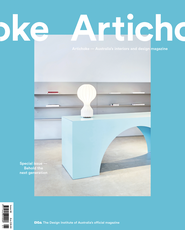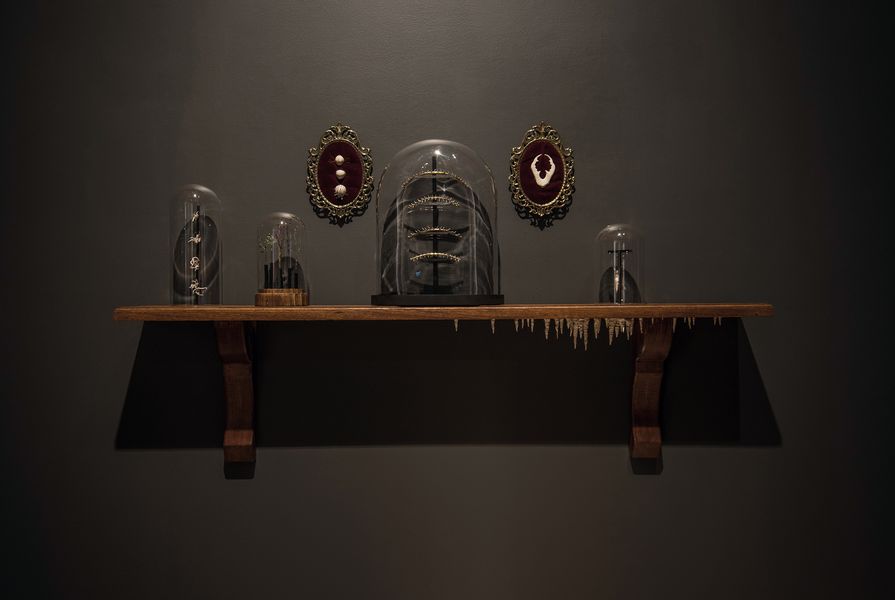Appearing to be plucked from nature, Samantha Dennis’s practice occupies both science and art. Crafted from metal and ceramics, spiders crawl over the wearer, or beetles shimmer pinned to clothing.
With her love of both disciplines, Dennis’s artworks are inspired by her rural childhood, navigating the neighbouring bush and swamps. “My works are a response to the awe and curiosity felt when discovering wonders in nature, particularly small and fragile lifeforms such as insects, fungi and corals,” she says.

Samantha Dennis.
Image: Mel de Ruyter
Working near the banks of the River Tamar, Launceston, Dennis crafts her creatures from her home studio after a fine art degree at the University of Tasmania. Here, she curiously ventured into a range of electives.
“I went in pursuing painting, portraiture specifically, but took an elective in basic silver smithing ‘just for fun’; it was then that I felt a seminal kind of catharsis in the tools and materials of it and this completely changed my interests from 2D to 3D,” Dennis adds.
By fitting in with the boundaries of “craft,” the artworks invite a nuanced conversation from the relationship to the wearer, the historical connotations, and the production of the object.
“In jewellery, there are inherent qualities that can be expected of it, both physically (a family of small, decorative objects to be worn on the human body, made from, or made to resemble, a subset of highbrow materials) and metaphorically (a dialect of precious and/or valuable, often political and gendered human-centric signifiers).”
Biophilia is a series of brooches and jewellery constructed from a combination of materials and found objects.
Image: Troy Ruffels
In harnessing these qualities and the juxtaposition of jewellery versus the “creepy” and realistic creatures, Dennis’s resulting works engage the “push and pull between desire and fear, or preciousness and disgust.”
“I am fascinated by the way attitudes towards nature are so often contextually dependent; many people react differently to seeing an insect in a museum specimen or a detailed illustration, to when they encounter the same type of creatures in ‘real life,’” she says.
Dennis’s highly detailed jewellery art prompts the viewer to consider a response outside of the visceral. Though she concludes, “[I]t’s not realistic to think a brooch can do that, but if the piece provides a new conscious moment for people to reflect on the complexity and beauty of these unfamiliar animals, and maybe that recurs the next time they see a real insect, then I think that’s a worthwhile experience to evoke.”
It’s your ultimate design dinner party – which four guests are you inviting? That’s really tricky. Perhaps British illustrator Katie Scott and Australian artist Fiona Hall, [who] both work very differently but are underpinned by themes of natural history and human cultures. And then Troy Ruffels, an image-based artist here in Tassie who is a long-term friend and mentor to me. And my partner Toby Wools-Cobb, a book merchant, private librarian and secretive writer who’s half the brains behind my practice.
Favourite artwork? I think that constantly changes, but one that is always up there is Fiona Hall’s Tender (2003-2006)
Favourite quote about design? “There is no better designer than nature.” Alexander McQueen
Source

People
Published online: 16 Aug 2023
Words:
Emma-Kate Wilson
Images:
Mel de Ruyter,
Troy Ruffels
Issue
Artichoke, March 2023




















